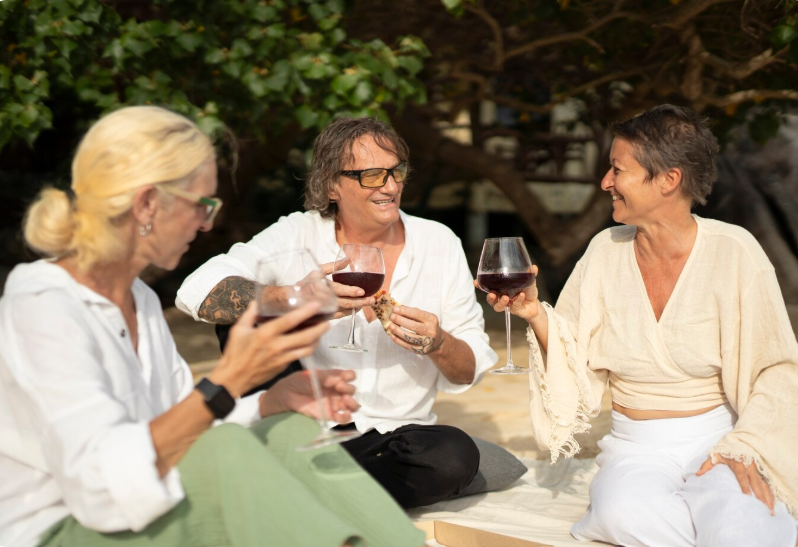Exploring France’s Lesser-Known Wine Trails
France is synonymous with wine, and while regions like Bordeaux, Champagne, and Burgundy often steal the spotlight, the country is rich with hidden gems waiting to be explored. For wine enthusiasts and curious travelers alike, France’s lesser-known wine trails offer a deeper, more intimate glimpse into its viticultural heritage. These off-the-beaten-path destinations provide not only exceptional wines but also a genuine taste of local culture, history, and tradition.
1. Jura: The Hidden Jewel of Eastern France
Nestled between Burgundy and Switzerland, the Jura region is known for its distinct wine styles, including the famous Vin Jaune (yellow wine) and Vin de Paille (straw wine). With its chalky limestone soils and alpine breezes, Jura produces unique varietals such as Savagnin and Trousseau. Visitors can follow the Route des Vins du Jura, stopping at small, family-run wineries and medieval villages like Arbois and Château-Chalon.
Jura’s rustic charm and quiet countryside make it a perfect escape from the crowded wine routes of France. Wine cellars are often located beneath centuries-old stone houses, giving tastings an authentic and historic atmosphere.
2. Alsace’s Northern Trail: Beyond the Touristy South
While southern Alsace towns like Colmar and Riquewihr attract crowds, the northern section remains a hidden delight. The lesser-known villages of Wissembourg, Cleebourg, and Andlau are home to rolling vineyards, half-timbered houses, and world-class Rieslings and Gewürztraminers.
The Alsace Wine Route (Route des Vins d’Alsace) winds its way through these sleepy hamlets, offering a more tranquil and authentic experience. You’ll find organic producers, biodynamic vineyards, and local winemakers eager to share their family’s legacy.
3. Gaillac: A Southwestern Secret
One of France’s oldest wine regions, Gaillac in the Tarn department predates even Bordeaux in winemaking history. Despite this, it remains under the radar for most tourists. Gaillac’s winemakers produce a diverse range of styles, including sparkling wines, sweet whites, and robust reds using rare local grapes like Mauzac and Braucol.
In addition to its wines, Gaillac offers a picturesque landscape of sunflower fields, Romanesque abbeys, and charming villages like Cordes-sur-Ciel. Many estates are open to visitors and offer personalized tours and tastings.
4. Savoie: Alpine Wines with a View
Savoie, located near the French Alps, is better known for skiing than winemaking—but that’s part of its charm. Vineyards here cling to steep mountainsides and produce fresh, crisp whites from grapes like Jacquère and Roussette. The wines are ideal for pairing with local alpine dishes such as raclette or tartiflette.
The region’s dramatic landscapes and proximity to natural parks like Chartreuse and Vanoise make it an ideal destination for combining wine tourism with outdoor adventure. Many producers offer guided hikes followed by tastings at the vineyard.
5. The Loir Valley: Loire’s Quiet Cousin
Not to be confused with the more famous Loire Valley, the Loir Valley (with no “e”) is a hidden treasure in northwestern France. This peaceful region boasts a cooler climate and is home to elegant reds and sparkling wines made from Pineau d’Aunis and Chenin Blanc.
The Coteaux du Loir wine trail takes visitors through scenic routes filled with vineyards, châteaux, and caves carved into limestone cliffs. With fewer tourists, you’ll enjoy a relaxed pace and more meaningful interactions with passionate local vintners.
6. Bellet: Nice’s Seaside Wine Secret
High above the city of Nice lies Bellet, one of France’s smallest and most unique AOCs (Appellation d’Origine Contrôlée). Its proximity to the Mediterranean gives the wines a distinctive minerality, and its use of rare grapes like Braquet and Folle Noire sets it apart.
Bellet is perfect for travelers who want to enjoy both the Riviera lifestyle and a wine-tasting experience. Vineyards offer panoramic views of the sea and mountains, and many welcome visitors by appointment for intimate tours and tastings.
Learning New Languages as an Expat: Strategies for Quick Success
As you explore France’s wine regions, especially the lesser-known ones, speaking even basic French can significantly enhance your experience. Locals appreciate the effort, and it often leads to warmer welcomes and deeper connections.
Here are a few quick strategies to help you learn faster:
- Start with practical vocabulary—ordering wine, greeting people, asking for directions.
- Use apps like Duolingo, Babbel, or Memrise daily for short practice sessions.
- Listen to local radio or watch French shows with subtitles to improve comprehension.
- Join language exchange meetups or speak with locals during your travels.
- Don’t aim for perfection—focus on being understood and improving with use.
Immersing yourself in the culture and using the language in context will accelerate your fluency and deepen your overall experience abroad.
Stay Connected for More Travel and Lifestyle Inspiration.
For more insights into travel, culture, and lifestyle tips, follow me on @salvadorordorica. If you’re seeking professional translation and localization services to enhance your global ventures, visit: The Spanish Group — your trusted partner in bridging cultures worldwide.



